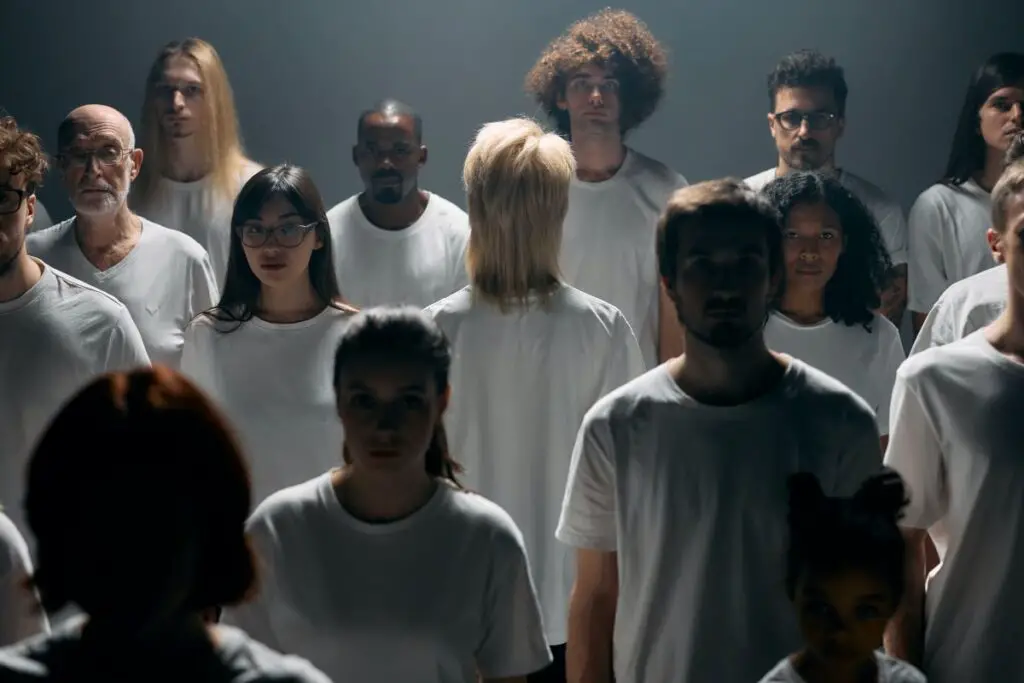Autism in the Future: Optimism for Improved Perception and Embracement
Autism, a neurodevelopmental condition that affects social interaction, communication, and behavior, has been long surrounded by misconceptions and stigmatization. In spite of its mostly rough treatments throughout history, there is good news is on the horizon when it comes to autism in the future.
Thanks to continued educational efforts about autism spectrum disorder, it is becoming increasingly evident that society’s perception and understanding about the future of autism is undergoing a profound transformation—in the right direction.
 Alongside advancements in medicine and treatment options, individuals with autism are feeling more empowered than ever before to embrace their unique abilities and foster a society that celebrates neurodiversity.
Alongside advancements in medicine and treatment options, individuals with autism are feeling more empowered than ever before to embrace their unique abilities and foster a society that celebrates neurodiversity.
That signifies some positivity and hope about the future of autism. However, it’s important to also understand answers to commonly-asked questions, like will autism go away or can autism be cured.
What changes lie ahead in regard to autism in the future?
For autistics like me, the future of autism is looking likely to include a changing landscape of neurodiversity, focusing on evolving perceptions, medical advancements, and a crucial journey toward self-acceptance. Neurodiversity is simply part of the human experience.
Autism in the Future: Shifting Perceptions
For many years, autism has been misunderstood and perceived solely as a disorder or deficit. However, as awareness and understanding of autism grow, perceptions of the condition are gradually changing.
Society is beginning to recognize autism as a natural variation of the human experience rather than a disorder that needs to be “fixed.” This shift in perspective challenges the notion of being neurotypical, acknowledging the diverse ways in which individuals perceive, interact, and process information. For the record, the answer to the questions, “Can autism be cured?” or “will autism go away,” is no. And, why should it? Autism is different than, not less than, after all.
The focus is shifting from deficits to strengths, emphasizing the immense potential and unique talents that individuals with autism possess.
Autistic individuals often exhibit exceptional abilities in areas such as pattern recognition, attention to detail, and creative thinking. (Of course, remember that every single individual is different—whether or not they have autism.)
By highlighting these strengths, society can provide opportunities for autistic individuals to excel in various fields, contributing their unique perspectives to science, art, technology, and more.
Increased representation of autism in media and popular culture helps dispel stereotypes and foster empathy. Stories and portrayals of autistic characters that highlight their strengths, challenges, and successes rather than the often-untrue ones contribute to a better understanding of ASD, leading to increased acceptance and inclusion.
Autism in the Future: Advancements in Medicine and Treatments
As our knowledge of autism deepens, autism in the future holds promising developments in the medical field aimed at improving the lives of individuals with autism. Research and innovation continue to uncover new insights into the complex nature of autism, leading to more targeted treatments and interventions.

By focusing on building skills, enhancing communication, and addressing behavioral difficulties, these interventions empower individuals with autism to navigate the world with greater ease and confidence.
Advancements in interventions may also play a role in managing co-occurring conditions that often accompany autism, such as anxiety, depression, and sensory sensitivities.
While medication should always be approached with caution and individualized care (remember, I am not a medical expert in any way), ongoing research is exploring ways to provide more effective and targeted pharmacological treatments to enhance the well-being and quality of life for individuals on the spectrum.
The Future of Autism: Empowering Self-Acceptance
An essential aspect of embracing autism in the future lies in fostering self-acceptance among individuals on the spectrum. Historically, societal attitudes and the medical model of autism have emphasized the need to “normalize” autistic individuals, often leading to a sense of shame or self-doubt.
However, autism self-advocacy movements are gaining momentum, empowering individuals to embrace their unique characteristics and redefine societal norms.
Autistic voices are being amplified through platforms like social media, conferences, and support groups. Autistic self-advocates provide valuable insights into the experiences, perspectives, and challenges faced by those with autism.
By sharing their stories and advocating for inclusivity, self-advocates play a pivotal role in educating the public and challenging stereotypes.
Having a voice about autism and helping others to better understand and accept the spectrum disorder, is exactly why I have created my own blog, My Autism Mind. If you are reading this article, then thank you for the support and love!
In addition, initiatives that promote self-acceptance and self-esteem in autistic individuals are gaining recognition as an optimistic forecast about autism and the future. The outlook is bright as people are developing better clarity to the questions of can autism be cured and will autism go away.
Initiatives and Celebrating Autism in the Future
Celebrating Neurodiversity
Neurodiversity is the recognition and celebration of the wide range of neurological differences present in society. In a future where autism is embraced as a vital aspect of human diversity, society can harness the strengths and talents that individuals with autism bring.

In education, embracing neurodiversity involves moving away from a one-size-fits-all approach to learning. It means creating flexible environments that cater to diverse learning styles, communication preferences, and sensory needs.
By providing appropriate accommodations and support, schools can empower autistic students to thrive academically and socially.
Employment practices are also evolving to embrace neurodiversity. Companies and organizations are beginning to recognize the unique skills and perspectives that individuals with autism in the future (and present) bring to the workplace.
Tailored job roles, workplace accommodations, and supportive work environments foster an inclusive culture that values neurodivergent employees and provides equal opportunities for career growth. However, there is much more to do in this area with autism in the workplace.
Supportive communities play a critical role in fostering neurodiversity acceptance. Autistic individuals and their families benefit from access to support groups, social networks, and mentorship programs. These communities provide a safe space for sharing experiences, seeking guidance, and nurturing a sense of belonging.
Promoting Research and Understanding
The future holds great potential for further research and understanding of autism. Scientists and researchers are delving deeper into the underlying mechanisms of autism, unraveling its genetic, environmental, and neurological components. This knowledge will contribute to more accurate diagnoses, targeted treatments, and a deeper understanding of the diverse manifestations of autism.
Advancements in technology and neuroscience provide new avenues for studying autism. Brain imaging techniques allow researchers to observe and analyze brain activity in individuals with autism.
These insights help unravel the neural pathways and networks associated with autism, leading to a better understanding of how the condition affects individuals’ cognition, behavior, and social interactions.
Additionally, collaborative efforts between researchers, clinicians, and the autistic community are crucial in shaping research agendas and priorities.
The inclusion of diverse perspectives ensures that research questions and methodologies are meaningful and aligned with the needs and experiences of individuals on the spectrum. By involving autistic individuals in research studies as active participants and co-researchers, we can foster a more inclusive and accurate understanding of autism.
Building Supportive Environments
Creating supportive environments for individuals with autism is key to their well-being and self-acceptance. In the future, there will be a greater emphasis on building inclusive communities that cater to the needs of neurodivergent individuals.
Education plays a vital role in creating a supportive environment for autistic students. Schools can implement inclusive practices such as sensory-friendly classrooms, individualized learning plans, and social skills training. Teachers and staff can undergo autism awareness training to better understand the unique needs of autistic students and provide appropriate support.
In the workplace, companies are recognizing the value of hiring and accommodating neurodivergent employees. Flexible work arrangements, mentorship programs, and communication support can contribute to the success and well-being of autistic individuals in the workplace.
Plus, promoting a culture of acceptance and diversity within organizations fosters a sense of belonging for all employees.
Supportive communities extend beyond educational and professional settings. Recreation centers, community organizations, and social clubs can provide spaces and activities that cater to the interests and sensory needs of individuals with autism. Such inclusive spaces foster social connections, reduce isolation, and enable individuals to explore their passions and talents.
Encouraging Collaboration and Advocacy
Collaboration and advocacy are pivotal in shaping the autism in the future with acceptance and support. Governments, non-profit organizations, researchers, clinicians, and the autistic community must join forces to drive policy changes, increase access to resources, and raise public awareness.
Legislation that supports the rights and inclusion of individuals with autism is crucial. This includes ensuring equal access to healthcare, education, employment opportunities, and community services.
Advocacy efforts that amplify the voices of autistic individuals and their families play a significant role in shaping public policies and challenging discriminatory practices.
What I Hope To See With Autism in the Future
I hope to see the day autism is truly embraced, both in society and individuals. Autism has long history of being misunderstood and it’s about time we corrected the stigmas. That way, we can create a better future where people with autism are understood and accepted for who they are.
We still have a long way to go with autism in the future because of conspiracy theories like “Vaccines cause autism” conspiracy theory and others like it. But we have to keep being persistent. It can and it will be challenging but with time we will succeed and we will be able to live peaceful and happy lives.
As autistics like me cautiously embrace the changing landscape of autism in the future, we recognize the importance of evolving perceptions, advancing medical treatments, fostering self-acceptance, celebrating neurodiversity, promoting research and understanding, building supportive environments and connecting with others, and encouraging collaboration and advocacy.
By embracing neurodiversity, supporting self-advocacy, and providing personalized interventions, we can empower individuals with autism to embrace their unique abilities and thrive in a world that celebrates their contributions.
Autism in Adults: Living, Learning, and Overcoming Challenges for a Fulfilled Life
Autism in adults requires additional support and coping skills to achieve independence in today’s world. Learn more about ways adults can live fulfilled lives and the challenges they face.
- 14 Practical Ways for Staying Motivated to Unlock Full Potential
- Autism and Independence: 7 Skills That Empower Individuals to Thrive
- Dangers of Social Media Addiction: How To Leave the Screens And Face the Real World
- Autism Volunteer Opportunities: 5 Ways Helping Others Fosters Acceptance
- 8 Heartfelt Ways Autism Emotional Support Animals Transform Lives
- Autism and AI: 7 Discoveries About the Surprise Pairing and Profound Impact
- Are You An Adult With Autism? Here Are 6 Signs
- Autism After High School: Is College the Next Step?
- Autism vs Asperger’s Syndrome: What You Need to Know
- Autism Disclosure: Is Revealing Your Disorder Helpful or Hurtful?
- Work and Autism: What Employers Should Know About Hiring People Like Me
- Drivers with Autism Can Achieve Success Behind the Wheel